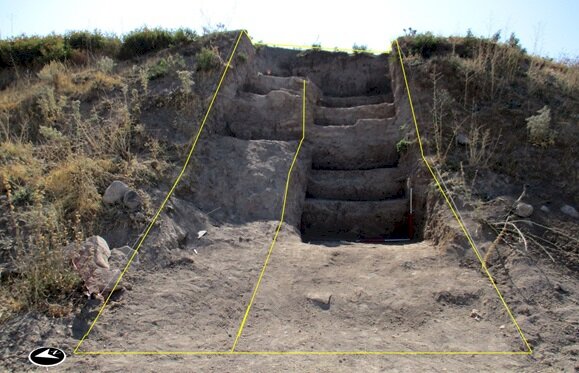Prehistoric city offers clues on ancient settlement in northwest Iran

A 6,000-year-old archaeological mount, uncovered during an urban construction in the modern town of Gerd Ashvan, which is situated near Lake Urmia in West Azarbaijan province, embraces four phases of archaeology belonging to the fourth millennium BC, according to archaeologist Mahnaz Sharifi.
The [newly] unearthed cultural material, including potteries, and architectural relics, offers clues to discover the chronology of the region during the Copper, and New Stone Age, Sharifi who lead the survey announced on Saturday.
The excavations on the mount will be continuing till untouched soil is reached, Sharifi added.
One of the cultural findings at the mount relates to giant clay urns being used as human tombs in the Cupper, and the New Stone Age, which was a phenomenon solely practiced in Gerd Ashvan, and the same funeral services have not been reported from other parts of northwestern Iran, she said.
“Gerd Ashvan pottery indicates that some common cultural traditions exist between northwestern regions [of Iran], Anatolia, Caucasus, Mesopotamia, and Syria,… although the geographical position of Gerd Ashvan, which is adjacent to the Caucasus, Turkey, and Mesopotamia, has not been ineffective in this regard.”
Earlier this year, two ancient clay-jar tombs, embracing child corpses, were unearthed in Gerd Ashvan, which according to the archaeologist was a common tradition during the Copper and New Stone Ages.
“Burial of children in jars or large bowls was a widespread tradition in large areas from the Caucasus to northwestern Iran. And similar examples have been reported in Alchan Tappeh, Gara Hill in Mesopotamia, South Caucasus, amongst other places.”
Jar-burial can be traced to various regions across the globe. It is noted to have been practiced as early as 900 BC, and as recent as 15 CE-17th centuries. The origin of this practice is considered to be the different concept of death held by these cultures. In such societies, death is held to involve a slow change, a passage from the visible society of the living to the invisible one of the dead.
Types of jars and additional components vary from location to culture. Different shapes of jars can indicate the prestige or societal level of the deceased, or it can be a commonplace jar. Funerary offerings are sometimes placed in or around the jars, thus revealing more information about the value different peoples have for certain items.
The first well-documented evidence of human habitation in the Iranian plateau is in deposits from several excavated cave and rock-shelter sites, located mainly in the Zagros Mountains of western Iran and dated to Middle Paleolithic or Mousterian times (c. 100,000 BC).
AFM/MG
Leave a Comment